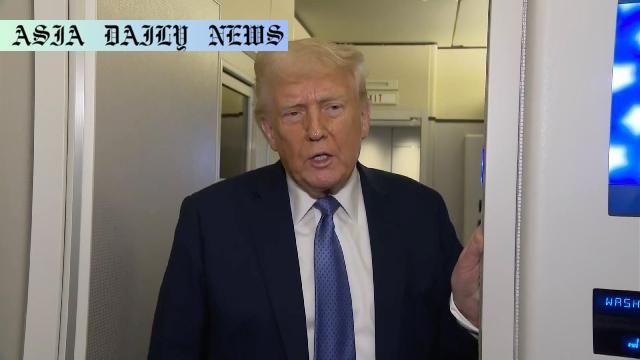Trump-Putin talks: US President Trump proposes a 30-day Ukraine ceasefire, discussing land and other assets to end the conflict.
Trump plans discussions with Putin regarding a 30-day Ukraine ceasefire.
Both parties have preliminarily discussed divisions of land and assets.
The U.S. aims to help end the Ukraine conflict through negotiations.

Introduction
US President Donald Trump has announced a pivotal conversation with Russian President Vladimir Putin on Tuesday, which aims to address the ongoing conflict between Ukraine and Russia. The discussion will focus specifically on a proposed 30-day ceasefire in the region, a move that marks a significant step toward potential peace in a war-torn area. Over the weekend, discussions and negotiations have been conducted between all sides to prepare for this critical diplomatic endeavor.
The Context Behind the Ceasefire Proposal
The Ukraine conflict, which has led to devastating consequences for both civilians and infrastructure, has been a central issue in international diplomacy for years. Trump, in his latest initiative, appears committed to fostering peace by brokering dialogue between the U.S., Russia, and Ukraine. During his remarks, Trump revealed that the ceasefire plan would include discussions around territorial arrangements and the future of strategic assets like power plants. He offered hope, stating that there is a “very good chance” of reaching an agreement.
Key Points Discussed: Land and Strategic Assets
One of the more contentious discussions expected arises from dividing land and critical infrastructure. Trump noted that “a lot of land is a lot different than it was before the war,” implying that territorial gains made since the outset of the conflict will play a significant role in negotiations. Both Ukraine and Russia have shown a willingness to discuss some of these details, with the U.S. acting as a mediator. However, the success of these discussions will depend heavily on mutual concessions and trust between the parties.
Challenges Ahead
Despite the optimism expressed by President Trump, achieving a 30-day ceasefire is far from guaranteed. Historical tensions, distrust, and the complexity of the issues at hand pose significant hurdles. Moreover, concessions regarding land could reignite controversies domestically and internationally, impacting political dynamics in all the involved nations. An amicable resolution is unlikely without serious compromises, which all parties must be prepared for.
The Potential Impact of a Ceasefire
If successful, the 30-day ceasefire could serve as a precursor to long-term peace agreements. During this period, humanitarian efforts could be intensified, infrastructure could be repaired, and displaced populations might begin their journey back to normalcy. Additionally, a reduction in armed conflict would allow global diplomatic focus to shift toward rebuilding Ukraine’s economy and addressing other worldwide issues. This initiative, therefore, has the potential for far-reaching impacts beyond Europe.
Conclusion
The upcoming Trump-Putin talks hold monumental significance in the context of international relations. While the road to peace in Ukraine is riddled with obstacles, the pursuit of a 30-day ceasefire represents a glimmer of hope amidst ongoing violence and geopolitical tension. Whether this unprecedented move from the U.S. administration will yield tangible results remains to be seen, but it unequivocally underscores the necessity and urgency of diplomacy in resolving global crises.
Commentary
Analyzing the Trump-Putin Ceasefire Initiative
President Trump’s decision to engage in direct talks with President Putin on the Ukraine conflict is an intriguing and bold move. It demonstrates a willingness to spearhead peace initiatives, even in one of the world’s most complex geopolitical situations. The ceasefire proposal is a clear manifestation of the U.S.’s intention to play an active role in shaping the trajectory of this conflict. However, the question remains: Can this initiative effectively address the core issues and lead to meaningful progress in the region?
The Complexity of Territorial Concessions
The proposal to discuss land divisions and strategic assets such as power plants reflects the intricate challenges involved in peacemaking. Territorial adjustments are among the most contentious topics in international conflict resolution. Any agreement on this front would require significant compromises from both Ukraine and Russia. While Trump’s remarks hint at progress, they also underscore the complexity and sensitivity of such negotiations. Gains in one area could easily lead to setbacks in another.
The Dual Edge of Diplomatic Negotiations
One must also consider the broader implications of a 30-day ceasefire. While ceasing hostilities is undoubtedly a step forward, temporary measures may not suffice to address the deep-rooted causes of the conflict. There is a risk that this initiative could stall further progress or even embolden certain parties to leverage temporary peace for strategic advantages. Careful monitoring and accountability mechanisms will be essential to ensure that the ceasefire serves as a stepping stone for lasting peace rather than merely a pause in violence.
Final Reflections on Prospects for Peace
Overall, the Trump-Putin talks represent an opportunity for both optimism and caution. The initiative has the potential to bring tangible relief to millions affected by the Ukraine conflict. However, the stakes are high, and the road ahead will likely be fraught with obstacles. Diplomacy, if pursued with sincerity and commitment, can yield transformative results. Let’s hope that these talks inspire a precedent for constructive engagement on a global scale.


